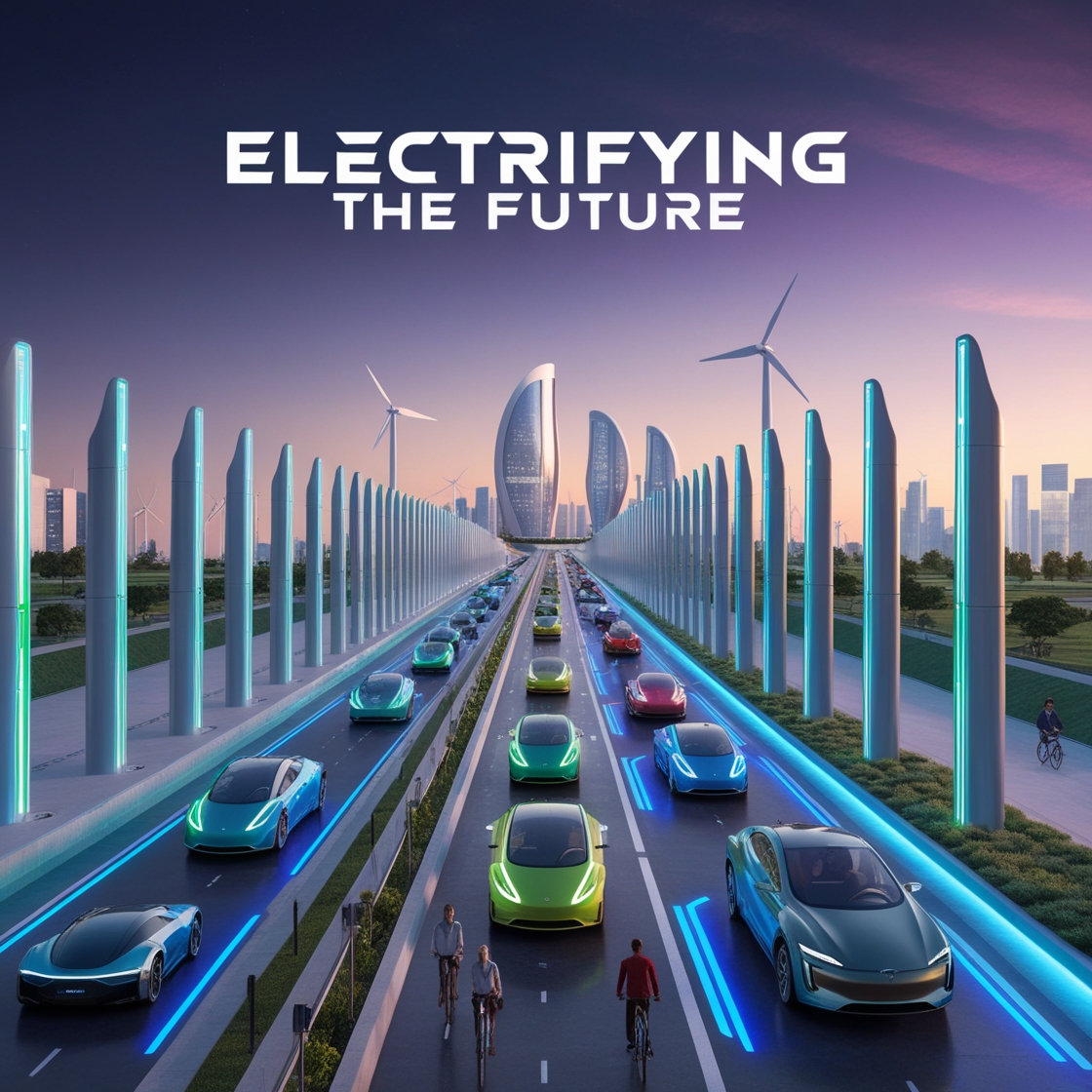1. The Current State of Electric Vehicles
1.1 Growing Popularity of EVs
The popularity of EVs has skyrocketed in recent years. As more manufacturers enter the market, consumers now have a variety of options—from budget-friendly models to luxury cars. Major brands like Tesla, Nissan, and Ford are leading the charge, while traditional automakers are ramping up their electric offerings.
1.2 Environmental Impact
One of the biggest draws of EVs is their potential to reduce greenhouse gas emissions. With increased awareness of climate issues, consumers are increasingly prioritizing sustainability in their vehicle choices.
2. Key Technologies Driving EV Adoption
2.1 Battery Innovations
The heart of any EV is its battery. Innovations in lithium-ion batteries, including improved energy density and faster charging times, are crucial for making EVs more appealing. Future developments may even lead to solid-state batteries, which promise higher efficiency and safety.
2.2 Autonomous Driving
As EV technology matures, many manufacturers are also incorporating autonomous driving features. This could significantly change how we think about transportation and car ownership, leading to a more interconnected and efficient transport ecosystem.
3. Charging Infrastructure: The Backbone of EV Adoption
3.1 Current Charging Landscape
Today, charging infrastructure varies significantly by region. While urban areas may have numerous charging stations, rural areas often lack sufficient access. This disparity can deter potential EV buyers who are concerned about “range anxiety.”
3.2 Types of Charging Stations
There are several types of charging stations:
- Level 1 Charging: Typically a standard home outlet, this is the slowest option.
- Level 2 Charging: More common in public spaces, it offers faster charging times.
- DC Fast Charging: Ideal for quick top-ups on long journeys, these stations can charge a vehicle in under an hour.
4. The Future of Charging Infrastructure
4.1 Expanding the Network
To support the anticipated growth in EVs, extensive investment in charging infrastructure is crucial. Governments and private companies are increasingly recognizing this need, leading to initiatives aimed at expanding charging networks globally.
4.2 Smart Charging Solutions
Smart charging technology allows for real-time monitoring and management of charging sessions. This can optimize energy usage, reduce costs, and minimize the strain on the electrical grid during peak hours.
4.3 Integration with Renewable Energy
Future charging stations are likely to integrate renewable energy sources like solar and wind. This not only makes charging greener but also enhances energy independence and sustainability.
5. Challenges Ahead
5.1 Grid Capacity
As the number of EVs grows, so does the demand for electricity. Upgrading the grid to handle increased load while ensuring reliability will be a significant challenge.
5.2 Consumer Adoption
While the market is expanding, consumer adoption remains a hurdle. Addressing concerns around range, charging times, and initial costs is essential to encourage more drivers to make the switch.
6. The Role of Government and Policy
6.1 Incentives for EV Purchases
Many governments worldwide are offering incentives to boost EV sales, such as tax credits and rebates. These policies are vital for making EVs more financially accessible.
6.2 Regulation of Charging Infrastructure
Regulatory frameworks are necessary to standardize charging equipment and ensure interoperability across different systems. This will create a seamless experience for EV users.
7. The Future Market Landscape
7.1 Increased Competition
As more players enter the EV market, competition will drive innovation and lower prices. This is beneficial for consumers, who will have more choices and potentially better technology.
7.2 Car-as-a-Service (CaaS)
The rise of shared mobility solutions could transform car ownership. CaaS models allow users to rent or subscribe to vehicles on-demand, which could be particularly appealing for urban residents.
8. Conclusion
The future of electric vehicles and charging infrastructure is bright yet complex. With advancements in technology, increased consumer awareness, and supportive policies, we are on the brink of a transportation revolution. The key to success will be a comprehensive approach that combines vehicle innovation with robust charging solutions, ensuring that EVs are a viable option for everyone, everywhere.
FAQs
1. What is the main advantage of electric vehicles?
Electric vehicles produce zero tailpipe emissions, reducing air pollution and greenhouse gas emissions compared to traditional gasoline vehicles.
2. How long does it take to charge an electric vehicle?
Charging times vary depending on the type of charger used, with Level 1 taking the longest and DC Fast Chargers providing a significant charge in under an hour.
3. Are there enough charging stations for electric vehicles?
While charging infrastructure is expanding, availability can vary significantly by location. Urban areas generally have better access than rural areas.
4. How does government policy affect EV adoption?
Government incentives and regulations can significantly boost EV adoption by making them more financially accessible and ensuring consistent charging standards.
5. What advancements can we expect in EV technology?
Future advancements may include better battery technologies, increased ranges, faster charging capabilities, and enhanced autonomous driving features.
